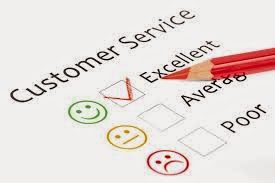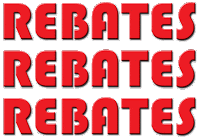Strategic Account Planning Part 5
What value do you bring to the customer?
 Several months ago, I had
the opportunity to “ride along” with what my client described as “one of
our promising new sales guys.” Because I
wanted to just get a snapshot of the quality and quantity of this guy’s work, I
didn’t do much to brief him on our objectives for the day. Instead, I emailed him, "I just want to ride
along and observe your work." A few days
later he texted coordinates of a greasy spoon where we would slosh down a cup
of coffee and brace ourselves for the day.
Several months ago, I had
the opportunity to “ride along” with what my client described as “one of
our promising new sales guys.” Because I
wanted to just get a snapshot of the quality and quantity of this guy’s work, I
didn’t do much to brief him on our objectives for the day. Instead, I emailed him, "I just want to ride
along and observe your work." A few days
later he texted coordinates of a greasy spoon where we would slosh down a cup
of coffee and brace ourselves for the day.
After a handshake and a
few social niceties, we dove into the day ahead. I was pleased. He had real live appointments at three
accounts and plans to drop by another couple if time allowed. Demos and literature were well thought out
and carefully stored in the back seat of his meticulously clean company
car. He had invested in timely topics to
explore with the various people scheduled to see us. I could easily see why this guy impressed the
boss.
 During our 30 minute drive
to the first appointment, we talked about his company; locations, people, size,
products on their line card and lots of sundry details. These folks were on the move. About midway into our drive, I asked, “What
kind of value to you deliver to the customer?”
The answer was both typical and scarey; something to the effect of, “We
have the best service in the whole area.”
And, in spite of a couple of unfocused pushes, the best I could get was
“better outside sales”, “great customer service” and a “willingness to
listen.”
During our 30 minute drive
to the first appointment, we talked about his company; locations, people, size,
products on their line card and lots of sundry details. These folks were on the move. About midway into our drive, I asked, “What
kind of value to you deliver to the customer?”
The answer was both typical and scarey; something to the effect of, “We
have the best service in the whole area.”
And, in spite of a couple of unfocused pushes, the best I could get was
“better outside sales”, “great customer service” and a “willingness to
listen.”
This is an all too common
response. And it’s epidemic in our
industry. For knowledge-based
distributors it could be a fatal flaw.
What should have the sales
guy responded? A detailed list of
services (which translate into value) provided to customers would have been a nice start. Here are a dozen examples:
1
|
Policy of stocking
emergency inventory to assist customers during emergency and downtime
situations.
|
2
|
After hours access to
inventory and staff in emergency situations.
|
3
|
Ongoing customer
training sessions including one-on-one training for new engineers,
maintenance personnel and others.
|
4
|
Ability to handle
blanket orders and provide summary billing which drives down the customer’s
administrative costs.
|
5
|
Inventory services to
assist customers with managing consumable parts.
|
6
|
Willingness to join
customer in tri-lateral negotiations to improve costs on high volume
purchases.
|
7
|
Salespeople with technical
backgrounds capable of assisting in the selection of the best product for the
customer’s application.
|
8
|
Highly trained Product
Specialists who assist with product concepts and layouts.
|
9
|
Troubleshooting
assistance with technical products.
|
10
|
In-house value add group
with capabilities to provide complete sub-assemblies ready for installation.
|
11
|
Engineers and
Specialists who work with customers to “value engineer” existing designs in
search new technology and/or products with better fit with the goal of
driving down unit costs.
|
12
|
Willingness to source
hard to find parts which drive up administrative costs at the customer.
|
Is this a complete
list? I doubt it. Most distributors we work with can come up
with 20-50 more things they do to provide value to their customers. The point is you have something to sell above
and beyond the products shipping from your warehouse. And, a good strategic plan pulls from the
list. Why? Because not all of your services match up
with every customer, but you need to have a very solid grip on what’s available
before you can proceed with your plan.
On to the
plan…
Way back in the 1970s,
Feature/Benefit selling was the rage.
You detailed your product one feature at a time; matching corresponding
customer benefits to each feature.
Average performers simply reiterated each feature/benefit set in every
customer presentation. It sounded like
the drone of a skipping record. Great salespeople,
on the other hand, worked to only stress the features and benefits of
importance to the customer they were speaking to at the time.
The same thought process
must be used when matching your company’s value to each account. Additionally, care must be taken to closely
match values presented to the right person at the account. For instance, in example 5 above we noted the
distributor had the ability to assist the customer in managing
consumables. No doubt, the customer
contact charged with the task of inventory may see this service as a potential
threat to his job security. At the same
time, a facilities manager concerned with driving performance at that same
account may see this as very valuable and as the key to reassigning the
inventory guy to something more productive.
Thinking more deeply... In
most instances, it pays to bring your values to the customer in an order which
is well thought out. Some values are
expensive. Others may actually be less
well defined (a nice way of saying "worse") than an incumbent competitor.
This dovetails back to the power of a strategic plan for each major
account.
Where might you easily
demonstrate your ability to provide value?
Once that value has been demonstrated, how can you expand into other
areas of increasing importance? Are
there competitors which could easily be displaced and their business rolled
into your cart?
A final
couple of thoughts…
It’s never enough to just
provide value. Get feedback from your
customers. Customer emails detailing how
you helped solve a problem open other doors to sales. Ask the customer if they will send an email
you can share with a supplier or your boss.
And even if the customer hesitates to send you some documentation,
create your own log of actions, values provided and other milestones at the
account.
Never try to introduce
multiple values at the same time. While
they do make for a great capabilities presentation, too many choices confuse
the customer. Instead, work to understand
the customer’s own priorities. Gather
the kind of data we spoke about in Part 3 of this series. Ask additional questions and introduce your
value; one step at a time.





Comments